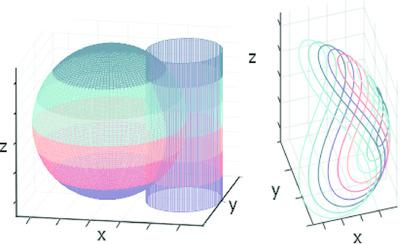当前位置:
X-MOL 学术
›
Acta Crystallogr. A Found. Adv.
›
论文详情
Our official English website, www.x-mol.net, welcomes your
feedback! (Note: you will need to create a separate account there.)
Extending the Debye scattering equation for diffraction from a cylindrically averaged group of atoms: detecting molecular orientation at an interface.
Acta Crystallographica Section A: Foundations and Advances ( IF 1.9 ) Pub Date : 2020-05-20 , DOI: 10.1107/s2053273320005276 A E Ross 1 , D G McCulloch 2 , D R McKenzie 1
Acta Crystallographica Section A: Foundations and Advances ( IF 1.9 ) Pub Date : 2020-05-20 , DOI: 10.1107/s2053273320005276 A E Ross 1 , D G McCulloch 2 , D R McKenzie 1
Affiliation

|
The Debye scattering equation is now over 100 years old and has been widely used to interpret diffraction patterns from randomly oriented groups of atoms. The present work develops and applies a related equation that calculates diffraction intensity from groups of atoms randomly oriented about a fixed axis, a scenario that occurs when molecules are oriented at an interface by the presentation of a binding motif as in antibody binding. Using an example biomolecule, the high level of sensitivity of the diffraction pattern to the orientation of the molecule and to the direction of the incident beam is shown. The use of the method is proposed not only for determining the orientation of molecules in biosensors and at membrane interfaces, but also for determining molecular conformation without the need for crystallization.
中文翻译:

扩展Debye散射方程以从圆柱平均原子组衍射:检测界面处的分子方向。
德拜散射方程现在已有100多年的历史,已被广泛用于解释随机取向的原子组的衍射图。本工作开发并应用了一个相关方程,该方程可从围绕固定轴随机定向的原子组计算衍射强度,这种情况发生在分子通过结合基序的呈现(如抗体结合)将分子定向在界面上时。使用示例性生物分子,示出了衍射图对分子的取向和对入射束的方向的高度敏感性。提出该方法的用途不仅用于确定生物传感器中和膜界面处分子的取向,而且用于确定分子构象而无需结晶。
更新日期:2020-07-01
中文翻译:

扩展Debye散射方程以从圆柱平均原子组衍射:检测界面处的分子方向。
德拜散射方程现在已有100多年的历史,已被广泛用于解释随机取向的原子组的衍射图。本工作开发并应用了一个相关方程,该方程可从围绕固定轴随机定向的原子组计算衍射强度,这种情况发生在分子通过结合基序的呈现(如抗体结合)将分子定向在界面上时。使用示例性生物分子,示出了衍射图对分子的取向和对入射束的方向的高度敏感性。提出该方法的用途不仅用于确定生物传感器中和膜界面处分子的取向,而且用于确定分子构象而无需结晶。











































 京公网安备 11010802027423号
京公网安备 11010802027423号